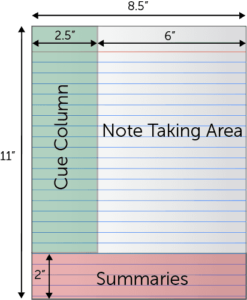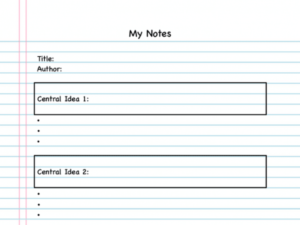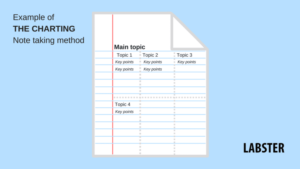
When we were in school, taking notes was relatively easy. All you’d need to do was copy down what your teacher was writing on the board or at most, write down what they say when they were dictating notes. But on your first day of college, you’ll realize that every teacher mostly sticks to the method of giving a lecture on topics rather than making you take down important notes. So in the end, it is technically up to you to ensure that you learn the necessary pieces of information from these aforementioned lectures. Most people tend to do this by writing down important points and notes during classes but this is a task that is easier said than done. It can be difficult at times to keep up with what the lecturer is saying as well as take adequate notes at the same time; which is why we have decided to prepare the ultimate guide to take down notes in class. Here are __ important points to follow when you’re taking down notes:
- Read your material before class: Having a quick glance at the topics that are going to be explained in class on any given day will help you understand the material much better which in turn will lead you to take notes a lot more quickly. Do note that when we say this, we don’t mean study the entire textbook for 2 hours before class or something; just try to make it a habit to spend the few minutes between each class to review the material that is going to be taught in the next class. If you’re unsure about what is going to be taught, ask your teachers beforehand. They’ll always be happy to help!
2. Get comfortable with writing fast: When it comes to note-taking, speed is the best quality you can have if you want to be successful. Always remember that your notes do not need to be incredibly legible or understandable by everybody; they just have to be adequate enough for you to understand. So, writing short-forms, keywords or even drawing symbols can work as long as you will be able to understand what you’ve written when you’re trying to study. Practise some speed-writing or speed-typing if you’re someone that takes notes on their phone, tablet or laptop.
3. Form a system/adopt an existing system of note-taking: Setting up your own system of note-taking will streamline the process to a good extent. Look at it this way, if you constantly follow the same method of taking notes, you’ll eventually become better at it over time. Just make sure that whatever system you form isn’t incredibly long or tedious as it will discourage you from following your own system. If you’re not up to setting up your own system, you can try and adopt one of these existing methods of note-taking:
- The Cornell Method:
- The Outline Method:
- The Boxing Method:
- The Charting Method:
- The Mapping Method
We do suggest you do some research on these methods yourself to see which one will suit you best.
4. Think and write: It can be easy to lose track of what is being said in class sometimes while you’re taking notes. Sometimes you may get a lecturer that teachers beyond the speed at which you can write in which case it would be quite hard to focus on both things at the same time. Which is why we suggest that you don’t write down everything that the lecturer says and to spend adequate time thinking and understanding a topic while you’re taking notes down. This will not only help you learn a topic better but will also help when you’re reviewing your notes while studying.
5. Record and clear your doubts: When you run into a topic that you don’t fully understand while your teacher is explaining important concepts, make a note of it too and clear out these doubts with your teacher once the lecture is complete. Leave appropriate space in your notes for when you’ve cleared your doubts and need to take down the necessary points and information as well.
6. Review your notes: After you’ve finished with class, take some time to go through your notes and revise everything that was explained in the various classes you attended throughout the day. Adding a summary at the end of these notes will help in understanding them better as well. Make sure that your notes can be understood by you and make necessary corrections, edits, and additions wherever it is needed.
Once you’ve figured out how to take great notes in class, the process of studying and preparing for exams becomes much easier and almost insignificant in a way. We hope this article was helpful to all of you. Thanks for reading!
If you’re looking for money to buy some notebooks, we’ve got you covered. Get the Stucred app here: StuCred App
Tags-How can I take better notes in class, different ways to take notes, how to take notes in the class, how to take good notes at work














